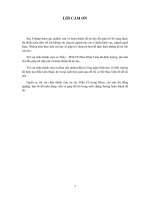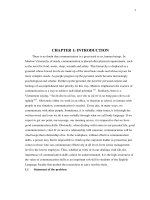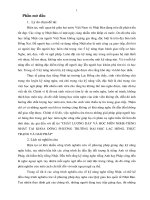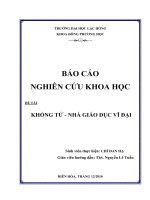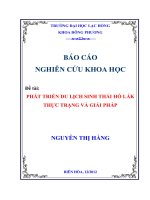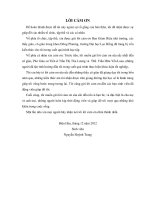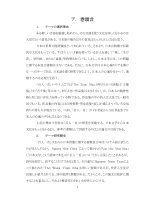Báo cáo nghiên cứu khoa học " Fruit Fruit fly (Bactrocera dorsalis) " pdf
Bạn đang xem bản rút gọn của tài liệu. Xem và tải ngay bản đầy đủ của tài liệu tại đây (15.8 MB, 28 trang )
Fruit fly
Fruit fly
(
(
Bactrocera
Bactrocera
dorsalis
dorsalis
)
)
2). Life cycle
2). Life cycle
The adult female fly feeds up to a week on
The adult female fly feeds up to a week on
protein, e.g. on bacteria growing on plant
protein, e.g. on bacteria growing on plant
surfaces, and on sugars, e.g. in honeydew
surfaces, and on sugars, e.g. in honeydew
and nectar, before laying eggs.
and nectar, before laying eggs.
Eggs are white, banana
Eggs are white, banana
-
-
shaped and 1 mm
shaped and 1 mm
long. They are deposited in batches of 10
long. They are deposited in batches of 10
-
-
12 into the spongy
12 into the spongy
albedo
albedo
of the fruit. The
of the fruit. The
rind puncture is not visible at first, but
rind puncture is not visible at first, but
later a yellow area develops around
later a yellow area develops around
the
the
‘
‘
sting
sting
’
’
site
site
.
.
Fruit fly
Fruit fly
(
(
Bactrocera
Bactrocera
dorsalis
dorsalis
)
)
2) Life cycle
2) Life cycle
Eggs hatch in 2
Eggs hatch in 2
-
-
3 days and the larvae borrow
3 days and the larvae borrow
into the fruit pulp. The number of larvae per
into the fruit pulp. The number of larvae per
fruit varies from one to 12 or more. Larvae
fruit varies from one to 12 or more. Larvae
complete their development in about 10
complete their development in about 10
days. They then drop to the ground to fined a
days. They then drop to the ground to fined a
suitable place to pupate. Pupation occurs in
suitable place to pupate. Pupation occurs in
the soil and can take about 7
the soil and can take about 7
-
-
9 days. Pupae
9 days. Pupae
are brown, barrel
are brown, barrel
-
-
shaped and about 4
shaped and about 4
-
-
5 mm
5 mm
long. They are over 6 generations per years.
long. They are over 6 generations per years.
Fruit fly
Fruit fly
2) Life cycle
2) Life cycle
egg
egg
Life cycle of fruit fly
Mealybug
Mealybug
(
(
Pseudococcus
Pseudococcus
sp.)
sp.)
1). Shape
1). Shape
Mealybugs
Mealybugs
(
(
Pseudococcus
Pseudococcus
sp.)
sp.)
1). Shape and
1). Shape and
damage
damage
symptoms
symptoms
Mealybugs
Mealybugs
(
(
Pseudococcus
Pseudococcus
sp.)
sp.)
1). Shape and damage symptoms
1). Shape and damage symptoms
There are many species attack on citrus plant.
There are many species attack on citrus plant.
Although shape is different, habits and symptoms
Although shape is different, habits and symptoms
are similar. The adult female
are similar. The adult female
mealybug
mealybug
is a slow
is a slow
-
-
moving, and covered by a thin coating of white,
moving, and covered by a thin coating of white,
mealy wax which extent into filaments around the
mealy wax which extent into filaments around the
edge of the body.
edge of the body.
Eggs hatching are small one and move
Eggs hatching are small one and move
flexility
flexility
. If
. If
larvae without pupae stage would be adults female
larvae without pupae stage would be adults female
and vice versa.
and vice versa.
Mealybugs
Mealybugs
(
(
Pseudococcus
Pseudococcus
sp.)
sp.)
1
1
). Shape and damage symptoms
). Shape and damage symptoms
Adult males are tiny, delicate winged insect with
Adult males are tiny, delicate winged insect with
long tail filament.
long tail filament.
Juveniles and adults seek out sheltered sites:
Juveniles and adults seek out sheltered sites:
under the fruit calyx, inside the navel of fruit,
under the fruit calyx, inside the navel of fruit,
between touching fruit and leaves, in curled
between touching fruit and leaves, in curled
leaves attacked by citrus
leaves attacked by citrus
leafminer
leafminer
and inside
and inside
cracks and crevices in bark.
cracks and crevices in bark.
Mealybug
Mealybug
excrete sticky honeydew that is good
excrete sticky honeydew that is good
medium for the growth of sooty mould and other
medium for the growth of sooty mould and other
fungi.
fungi.
Mealybugs
Mealybugs
(
(
Pseudococcus
Pseudococcus
sp.)
sp.)
2). Life cycle
2). Life cycle
“
“
Citrophilous
Citrophilous
”
”
Citrophilous
Citrophilous
mealybug
mealybug
female lay about 500
female lay about 500
eggs in a cottony egg sac, and hatch within a
eggs in a cottony egg sac, and hatch within a
few days. There are three
few days. There are three
moults
moults
in females
in females
and four in male.
and four in male.
The complete life cycle takes about 2 months
The complete life cycle takes about 2 months
and there are 3
and there are 3
-
-
4 generation per years.
4 generation per years.
Mealybugs
Mealybugs
(
(
Pseudococcus
Pseudococcus
sp.)
sp.)
2). Life cycle
2). Life cycle
“
“
Citrophilous
Citrophilous
”
”
Mites
Mites
Panonychus
Panonychus
citri
citri
1). Shape and damage symptoms
1). Shape and damage symptoms
The group mites attack on citrus include 8
The group mites attack on citrus include 8
species. However, red mite occur and cause
species. However, red mite occur and cause
damage popular almost citrus garden in
damage popular almost citrus garden in
Mekong delta area.
Mekong delta area.
The adult female red mite has oval body, and
The adult female red mite has oval body, and
is 0,5 mm long. The body is purple
is 0,5 mm long. The body is purple
-
-
red color
red color
with long white bristle on the back and sides,
with long white bristle on the back and sides,
the pale legs. The adult male is smaller than
the pale legs. The adult male is smaller than
female and legs are longer than one.
female and legs are longer than one.
Mites
Mites
1). Shape and damage symptoms
1). Shape and damage symptoms
Citrus red mite feeds on citrus fruit, leaves (young and
Citrus red mite feeds on citrus fruit, leaves (young and
old) and green twigs. The maturing leaf is preferred, and
old) and green twigs. The maturing leaf is preferred, and
most damage occurs on the upper surface, makes leaf
most damage occurs on the upper surface, makes leaf
curved, spotted grey scarring of the rind.
curved, spotted grey scarring of the rind.
Citrus rust mite
Citrus rust mite
(
(
Phyllocoptruta
Phyllocoptruta
oleivora
oleivora
)
)
Mites
Mites
1). Rind damage on fruit caused by citrus red mite
1). Rind damage on fruit caused by citrus red mite
Mites
Mites
2). Life cycle
2). Life cycle
The adult female citrus mite lays 20
The adult female citrus mite lays 20
-
-
40 eggs at rate of 2
40 eggs at rate of 2
-
-
3
3
per day. The egg is bright red and spherical, 0,13 mm
per day. The egg is bright red and spherical, 0,13 mm
diameter. Eggs are commonly deposited along the midribs
diameter. Eggs are commonly deposited along the midribs
of the leaves. Newly hatched larvae are red and have 6
of the leaves. Newly hatched larvae are red and have 6
legs. They develop through two further
legs. They develop through two further
nymphal
nymphal
stages
stages
with 8 legs before reaching adulthood. From egg to adult
with 8 legs before reaching adulthood. From egg to adult
can takes about 2
can takes about 2
-
-
8 weeks depend on temperature and
8 weeks depend on temperature and
humidity, the adult female live about 18 days. There are
humidity, the adult female live about 18 days. There are
8
8
-
-
10 generations per years.
10 generations per years.
Thrips
Thrips
(
(
Thysanoptera
Thysanoptera
)
)
1). Shape and damage symptoms
1). Shape and damage symptoms
There are 5 species of
There are 5 species of
thrips
thrips
caused damage on
caused damage on
Citrus.
Citrus.
Thrips
Thrips
are small with two short
are small with two short
antennae, and rapid moving when disturbed.
antennae, and rapid moving when disturbed.
Adult
Adult
thrips
thrips
are about 3
are about 3
-
-
4 mm; however, some
4 mm; however, some
one grow to length of about 12 mm. Wings of
one grow to length of about 12 mm. Wings of
thrips
thrips
are narrow with a fringe of long hairs on
are narrow with a fringe of long hairs on
the hind edge, and other are wingless.
the hind edge, and other are wingless.
Thrips
Thrips
1).
1).
Shape and damage symptoms
Shape and damage symptoms
Thrips
Thrips
have mouthparts adapted for sucking and
have mouthparts adapted for sucking and
rasping. Flowers are often
rasping. Flowers are often
favoured
favoured
feeding sites,
feeding sites,
but
but
thrips
thrips
also feed on developing fruit and young
also feed on developing fruit and young
leaves. Heavy infestations of
leaves. Heavy infestations of
thrips
thrips
cause twisting
cause twisting
and grey scarring of young foliage similar to the
and grey scarring of young foliage similar to the
damage cause by broad mites; ring scarring
damage cause by broad mites; ring scarring
around the stem end of a navel on fruit.
around the stem end of a navel on fruit.
Thrips
Thrips
1). Shape
1). Shape
(
(
Scirtothrips dorsalis
Scirtothrips dorsalis
Hood
Hood
)
)
(
(
Megalurothrips
Megalurothrips
kellyanus
kellyanus
)
)
(
(
Chaetanaphothrips orchidii
Chaetanaphothrips orchidii
)
)
(
(
Heliothrips
Heliothrips
haemorrhoidalis
haemorrhoidalis
Thrips
Thrips
1
1
). Damage symptoms
). Damage symptoms
Thrips
Thrips
(
(
Scirtothrips
Scirtothrips
dorsalis
dorsalis
Hood)
Hood)
2). Life cycle
2). Life cycle
Thrips
Thrips
often laid into soft tissue on very young
often laid into soft tissue on very young
fruit near the calyx, or in young leaves (near
fruit near the calyx, or in young leaves (near
the midrib or main vein), eggs are 0.3 mm long.
the midrib or main vein), eggs are 0.3 mm long.
Adult female lay about 2
Adult female lay about 2
-
-
3 eggs a day.
3 eggs a day.
Larvae develop through two stages to become a
Larvae develop through two stages to become a
propupa
propupa
. They complete life cycle takes about 5
. They complete life cycle takes about 5
weeks.
weeks.
Thrips
Thrips
adult can live 3 months. There
adult can live 3 months. There
are about 6 generations per year
are about 6 generations per year
They can attack many other fruit, beside
They can attack many other fruit, beside
citrus.
citrus.
Thrips
Thrips
(
(
Scirtothrips
Scirtothrips
dorsalis
dorsalis
Hood)
Hood)
2). Life cycle
2). Life cycle
propupa
Fruitpiercing
Fruitpiercing
moths
moths
(
(
Rhytia
Rhytia
hypernestra
hypernestra
)
)
Shape and damage symptoms
Shape and damage symptoms
Fruitpiercing
Fruitpiercing
moths
moths
(
(
Rhytia
Rhytia
hypernestra
hypernestra
)
)
Belong to
Belong to
Noctuidae
Noctuidae
, the adult moths fly
, the adult moths fly
to orchards during the night to suck juice
to orchards during the night to suck juice
from ripening fruit, and they rest outside
from ripening fruit, and they rest outside
the orchards by night. Adult
the orchards by night. Adult
fruitpiercing
fruitpiercing
moths are large and stout
moths are large and stout
-
-
bodied with a
bodied with a
wingspan of 100 mm. There are many
wingspan of 100 mm. There are many
species in the Mekong Delta, But the
species in the Mekong Delta, But the
yellow
yellow
-
-
orange, with black patches or spots
orange, with black patches or spots
are popular. Larval hosts include native
are popular. Larval hosts include native
vines
vines
Fruitpiercing
Fruitpiercing
moths
moths
(
(
Othreis
Othreis
fullonia
fullonia
(
(
Clerck
Clerck
)
)
The larvae feed on native vines for
The larvae feed on native vines for
about 3 weeks, through 5 stages before
about 3 weeks, through 5 stages before
forming a dark
forming a dark
-
-
brown pupa within a
brown pupa within a
delicate silk cocoon between
delicate silk cocoon between
webbeb
webbeb
leaves. After 3 weeks, adults emerge
leaves. After 3 weeks, adults emerge
from the pupa. Beside citrus the moths
from the pupa. Beside citrus the moths
can attack many other fruit tree. There
can attack many other fruit tree. There
are about 2
are about 2
-
-
4 generations per year.
4 generations per year.
Psyllids
Psyllids
(
(
Diaphorina
Diaphorina
citri
citri
)
)
1). Shape and biological characteristic
1). Shape and biological characteristic
*
*
Eggs are very small
Eggs are very small
with slight yellow,
with slight yellow,
pear shaped. They usually laid on young
pear shaped. They usually laid on young
leaves and buds
leaves and buds
*
*
Psyllids
Psyllids
larvae are small, oval shaped, new
larvae are small, oval shaped, new
hatching with yellow (second and third
hatching with yellow (second and third
instar
instar
) and yellow
) and yellow
-
-
brown (fourth and five
brown (fourth and five
instar
instar
), with 2 small wings
), with 2 small wings
Psyllids
Psyllids
(
(
Diaphorina citri
Diaphorina citri
)
)
1). Shape and biological characteristic
1). Shape and biological characteristic
Adult:
Adult:
2.5
2.5
-
-
3 mm long; brown dark body, wings
3 mm long; brown dark body, wings
have light brown color. Head is acute and
have light brown color. Head is acute and
brown color, red eyes.
brown color, red eyes.
When they are on the leaf, the body of
When they are on the leaf, the body of
the
the
psyllid
psyllid
will post the angle about 40
will post the angle about 40
0.
0.
